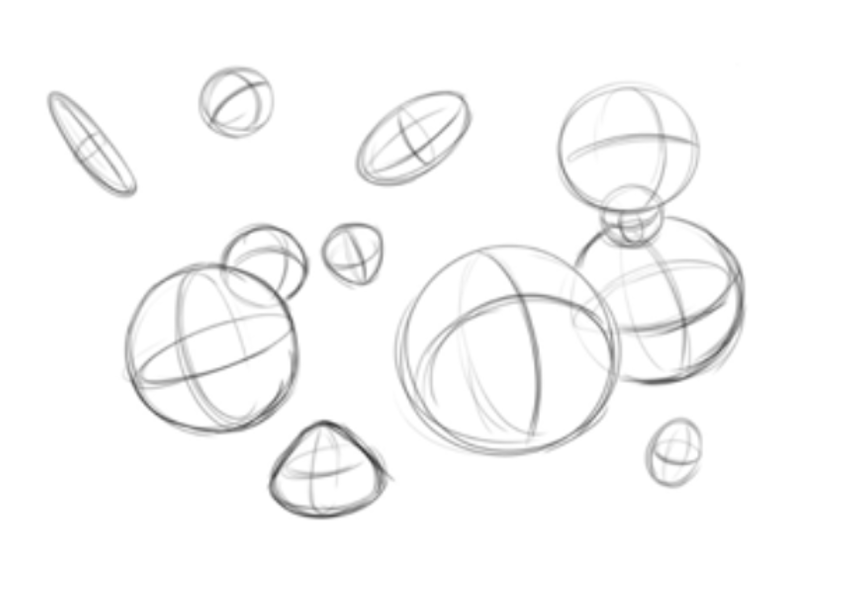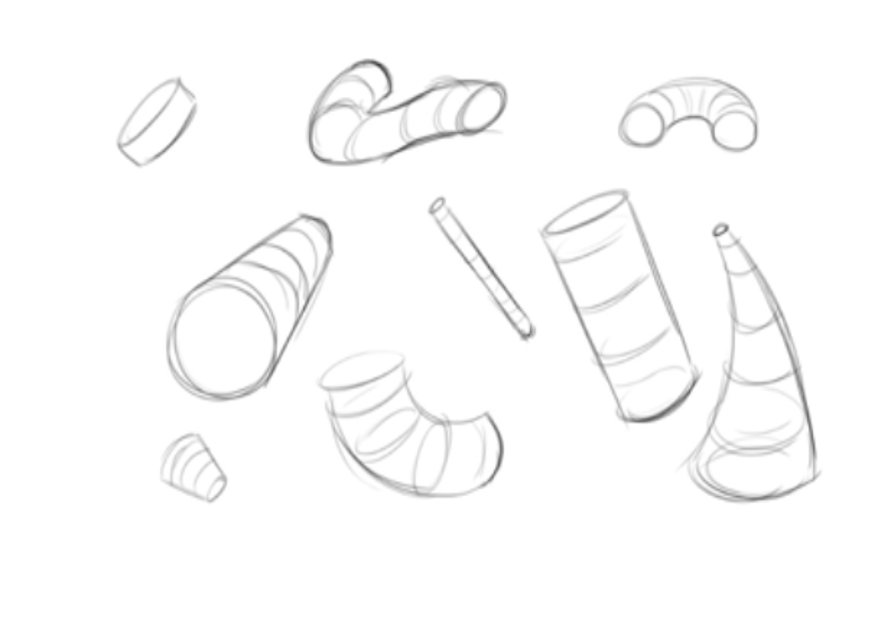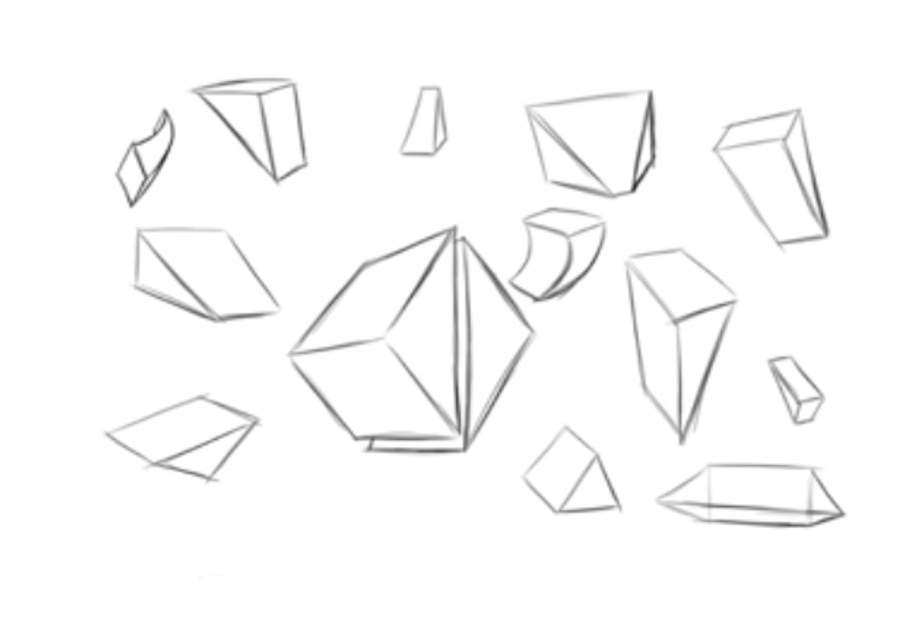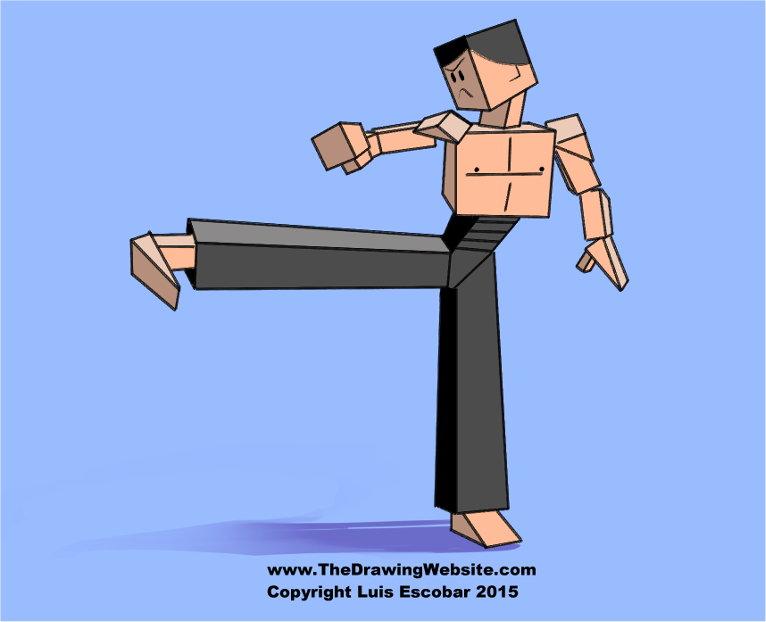Fundamentals of Drawing
The importance of fundamentals and in this I’d like to focus on a few of these topics with helpful learning resources. The best way to get better is to practice. But you need focused practice to see the best results.
Form
The idea of form is very general but also very important. Artists who learn to recognize form see beyond the 2D paper (or screen). They’re able to create objects that look realistic because the forms look jubilant and lively.
Forms define anything with volume. The human body has a lot of different shapes and forms, especially in the face. Your ability to see and understand forms will be crucial to your success as an artist. This is a fundamental skill for good reason.

Fundamentals of drawing?
Great art follows basic fundamental concepts about mirroring how reality looks. It’s hard to nail down exactly how many fundamental topics there are, but you will often hear a few terms repeated constantly.
•Line
•Form
•Perspective
•Light & value
These are four very common principles with others like composition and proportions being included too. Every skilled artist uses these fundamentals whether knowingly or not.
You don’t necessarily need to master the topic of perspective to draw something in perspective. But if you study perspective it’ll help you learn faster, and you’ll draw with conscious knowledge rather than a gut feeling of “it just looks right”.
Another brilliant example is the complex nature of light.
Topics like cast shadow, core shadow, halftones and reflected light all describe how light makes different values when it falls upon anything. People, buildings, objects, everything is seen through light and these effects can be scientifically understood to improve your art.
But having the underlying knowledge of light and how it behaves is required for you to draw & paint from imagination, which is vital for a concept artist Designer or animator.
So how do you practice this fundamental skill? I find it’s best to start with shapes.
Everything in life can be broken down into smaller forms like spheres, cones, cylinders, and boxes.
If you can draw these basic shapes in every perspective then you can reconstruct anything. To really be able to communicate in the clearest natural way, you need to learn three dimensional drawing forms.
There are four forms that, in combination, make up all three dimensional drawing:
•Spheres
•Cylinders
•Cubes
•Wedges
Just about every basic, flat, three-dimensional shape can be given dimension to become one of these three forms. Remember, the illusion of space is just that, an illusion. You're not drawing three dimensional forms; you're drawing flat shapes on a piece of paper.
That doesn't mean you can't trick the eye into thinking it's seeing something more dimensional. It's best to start thinking about your drawings as a flat graphic design which you add dimension to. This will make you're drawings more pleasing to the eye in the long run.
Everything you can see and draw can be broken down into these four basic forms. Although, sometimes they may be a complex combination of the forms. This is why it's so important to learn to draw them.
Let's take these four basic forms and see how they can be developed from flat graphic shapes:
Spheres - This one is pretty self explanatory, Circles or ellipses can be given dimension and turned into Spheres or modified Spheres. Spheres are very versatile but they can also be tricky to use.
They don't have corners which makes it more difficult to give them direction. You can usually do so by defining the radius of the outer surface of the Sphere.
Traditionally this is done by drawing the diameter across the circumference vertically and horizontally across the Sphere so you can clearly see it's dimension.

Spheres
Cylinders -Squares and modified squares can be made into Cylinders. This all depends on your intention.
Simply decide which direction the Cylinder is being seen from and add the circumference lines reinforcing the direction. Cylinders can be the most handy form to use in the preliminary drawing process.
They come in handy when you don't want to get too caught up in detail. They're ideal for drawing organic long forms and are great for defining gesture and rhythm.

Cylinders
Cubes - Cubes and modified Cubes are often created off of squares and rectangles as well. They can be the most useful of all the forms. Cubes are the easiest forms to get the illusion of dimension with. Because of this, Cubes can also be used to better clarify the perspective of forms that don't have corners, like Sphere modified Sphere and Cylinders.
This can be done by simply drawing a Cube around the corner less form. Whenever you're unsure about the dimension of a soft corner-less form, convert it into a Cube or modified Cube. The one drawback to cubes is that they are often stiff and inorganic.

Cubes
Wedges - Wedges are odd forms. They're usually created from both cubes and triangles, depending on the intent.
A wedge is basically a cube, cut in half diagonally across two of it's corners.
Most often, wedges are found combined with the other forms above creating a complex compound form. You'd be surprised how handy this form can be.
 Wedges
Wedges
Examples of Using These Simple Forms in Action
Let's see what can be done with these basic forms. Now a days with more stylized video games, such as Minecraft and Lego video games, we can have more blocky looking cartoon characters. Like this:
